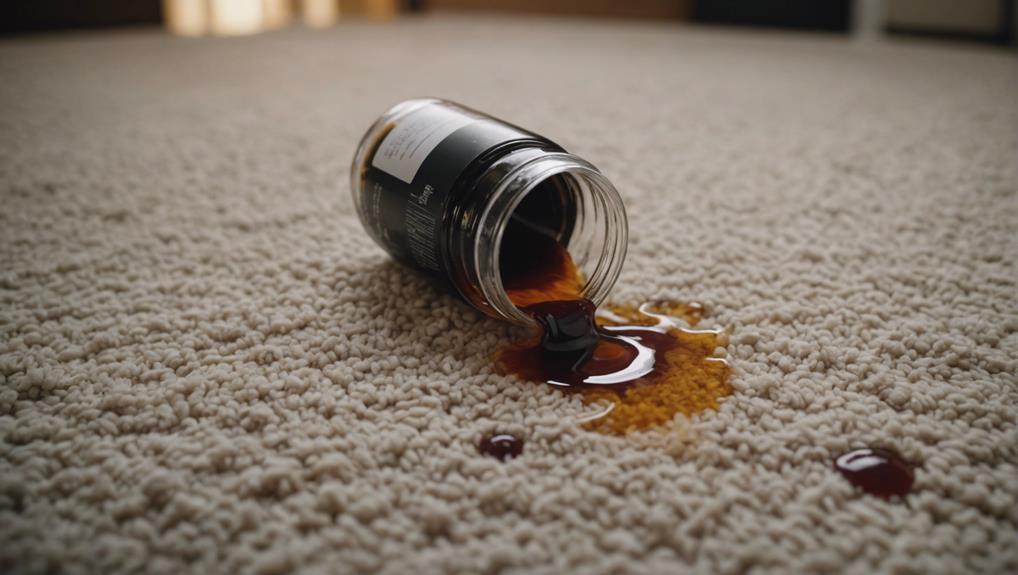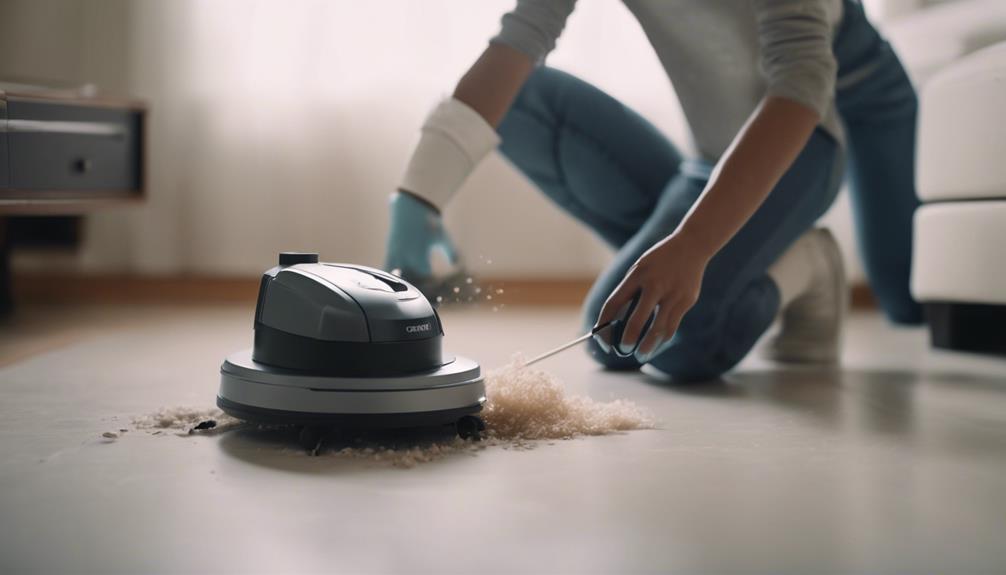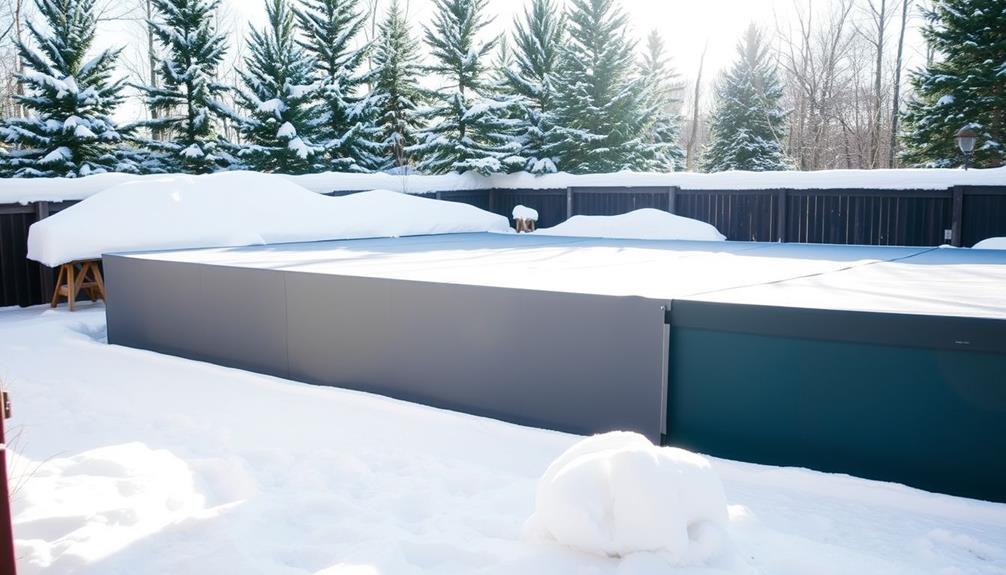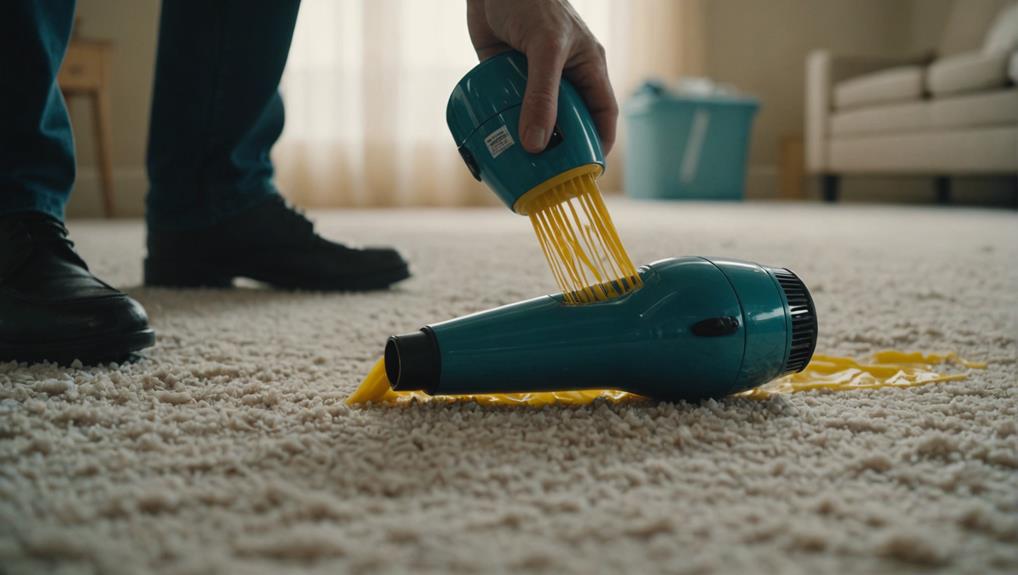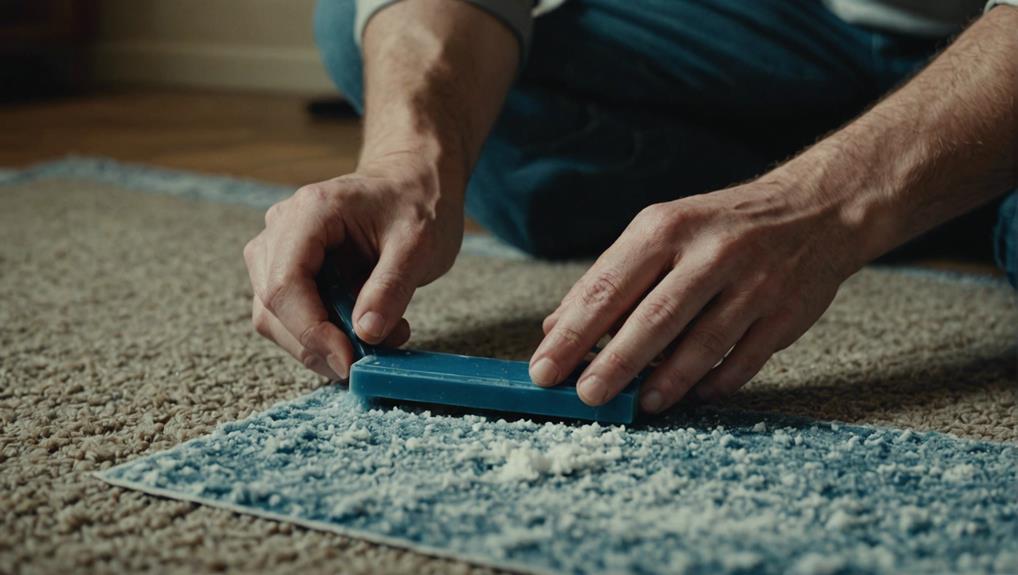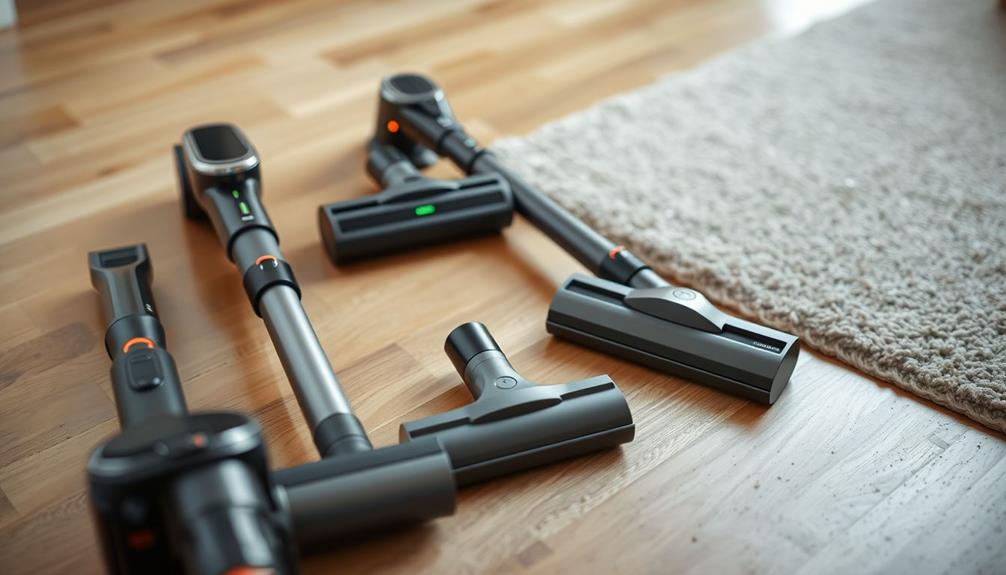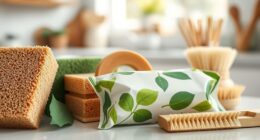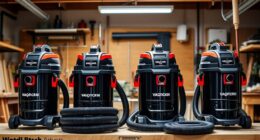To effectively remove carpet stains using liquid solutions, it is crucial to first identify the type of stain. Utilize cleaning products such as rubbing alcohol or vinegar, along with baking soda, to effectively combat stubborn stains. Make sure to blot or dab the area with excess liquid to avoid spreading, then consider using hot water extraction for particularly tough stains. It may be necessary to treat the area multiple times. Properly store cleaning solutions, test for color fastness, and dispose of them in the correct manner. Regular maintenance is key to preventing deep stains from setting in. Countless success stories highlight the effectiveness of these methods in removing red wine, coffee, and pet accidents. Embrace these powerful solutions to effortlessly tackle carpet stains and unlock the secrets to maintaining pristine carpets.
Key Takeaways
- VacAway Cleaner: Professional-grade solution for tough liquid stains.
- Pre-Treatment: Identify stain type and use appropriate solutions.
- Blotting and Dabbing: Absorb excess liquid to prevent spreading.
- Hot Water Extraction: Effective method for stubborn liquid stains.
- Patience and Persistence: Multiple treatments may be needed for complete removal.
Stain Removal Using VacAway
To effectively remove carpet stains, consider using VacAway Commercial Magic Carpet Cleaner, a highly concentrated and professional-grade solution. VacAway is specially formulated for low moisture systems, with a pH level of approximately 11-12 when diluted at a ratio of 1:32. This powerful cleaner isn't only economical but also excels in tackling tough stains on synthetic fibers.
Unlike some competitors like Grease Hawg, VacAway is preferred by many professionals and customers for its superior stain removal capabilities. However, it's essential to note that VacAway isn't recommended for use on carpets made of Stain Resist fibers that are still under warranty.
Customers have consistently praised VacAway Commercial Magic Carpet Cleaner for its effectiveness and reliability in removing stubborn stains. Its design and formulation cater to the needs of professional cleaners, making it a go-to solution for maintaining and restoring the cleanliness of carpets.
Liquid Stain Types
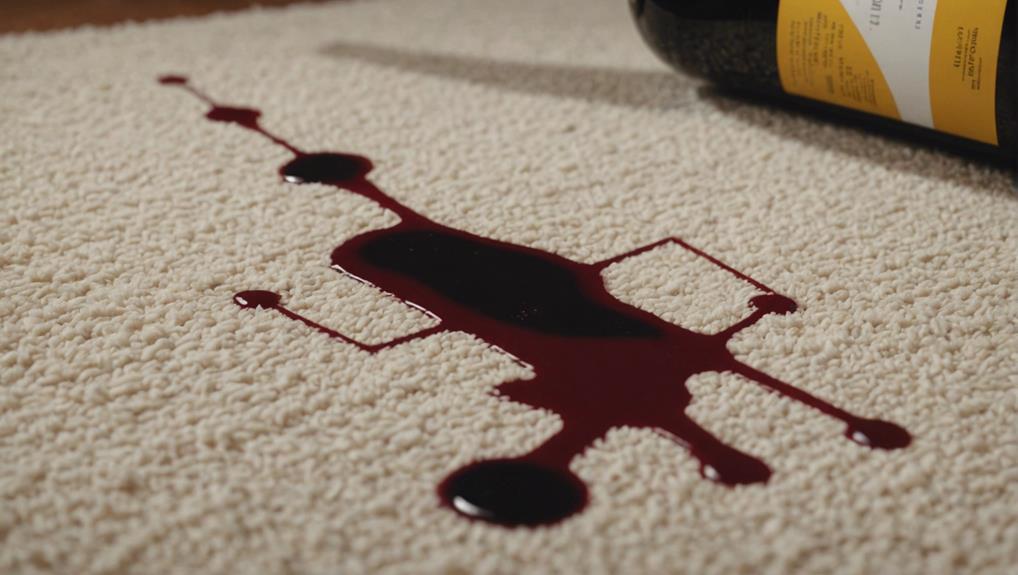
For effective carpet stain removal, understanding the different types of liquid stains is vital. Common liquid stains found on carpets include wine, coffee, juices, soda, and pet accidents. These stains can seep deep into the carpet fibers if not promptly treated, making them more challenging to remove.
Different liquid stains may require specific cleaning solutions for effective removal. Quick action is essential to prevent the liquid stains from setting into the carpet and causing long-term damage. By using the right cleaning method and solution tailored to the specific liquid stain, you can effectively eliminate the stains from your carpet.
Pre-Treatment Techniques
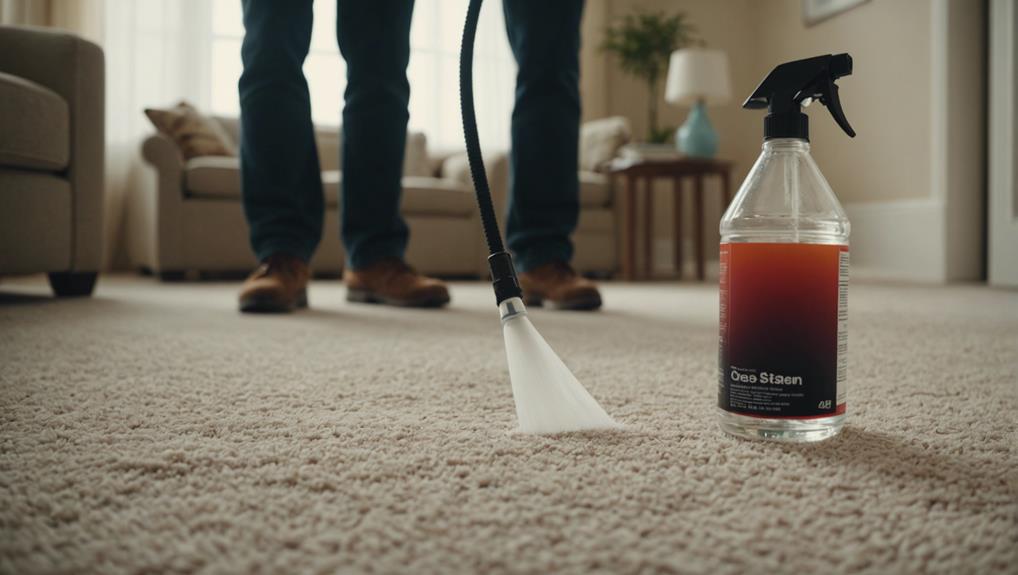
Pre-treatment techniques are vital in preparing your carpet for effective stain removal. By identifying the type of stain and applying the appropriate cleaning solution, such as rubbing alcohol or vinegar, you can break down tough stains like paint, mustard, wine, and chocolate milk.
Sprinkling baking soda on the affected area before cleaning can also help absorb moisture and odors, ensuring a more thorough cleaning process.
Stain Type Identification
Identifying the type of stain on your carpet is essential for effectively treating it before cleaning. To tackle stains properly, follow these key steps:
- Differentiate Stain Types: Determine if the stain is from coffee, wine, pet urine, or blood to apply the appropriate pre-treatment method.
- Choose the Right Solution: Use the correct carpet cleaner based on the nature of the stain for best results.
- Break Down the Stain: Pre-treating the stain helps to dissolve it, making it easier to remove during the cleaning process.
- Enhance Cleaning Efficacy: Understanding the stain's composition assists in selecting the right cleaning agent, increasing the chances of successful stain removal.
Blotting and Dabbing
Begin by gently blotting or dabbing the stained area to absorb excess liquid before applying any cleaning solution.
Blotting involves pressing a clean cloth onto the stain to prevent it from spreading further into the carpet fibers. This technique helps in lifting the liquid off the carpet surface effectively.
Dabbing, on the other hand, includes lightly tapping a cloth soaked in a cleaning solution onto the stain for better removal results. Both blotting and dabbing are vital pre-treatment steps before tackling the stain with a cleaning solution.
By following these techniques, you can minimize the damage caused by liquid spills on your magic carpet. Remember, the key is to be gentle to avoid pushing the liquid deeper into the carpet fibers.
Proper blotting and dabbing ensure a higher chance of successfully removing the stain and restoring your carpet to its pristine condition.
Application Tips for Success
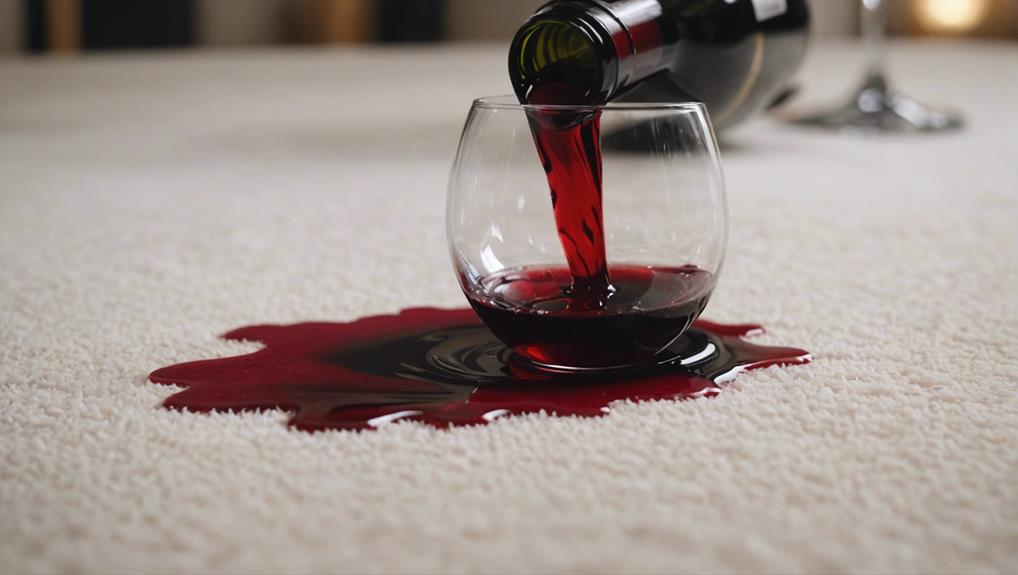
To achieve best results when applying the stain removal method, make sure that the stained area is sprayed with Windex until it's wet but not saturated. Once you have sprayed the area, follow these application tips for success:
- Vigorously Rub: After spraying the area, vigorously rub the stained spot with a towel to help absorb the stain and the liquid. The rubbing motion aids in loosening and lifting the stain from the carpet fibers.
- Use a Folded Towel: Place a folded towel over the treated spot and stomp on it. This action helps to further soak up excess moisture from the carpet, assisting in the stain removal process.
- Repeat Spraying and Rubbing: For stubborn or dark stains, repeat the spraying and rubbing process. This ensures thorough cleaning and helps in breaking down the stain effectively.
- Allow Drying: Once you have treated the stain, allow the carpet to dry completely. This step prevents further damage and avoids the possibility of re-staining.
Avoiding Common Mistakes
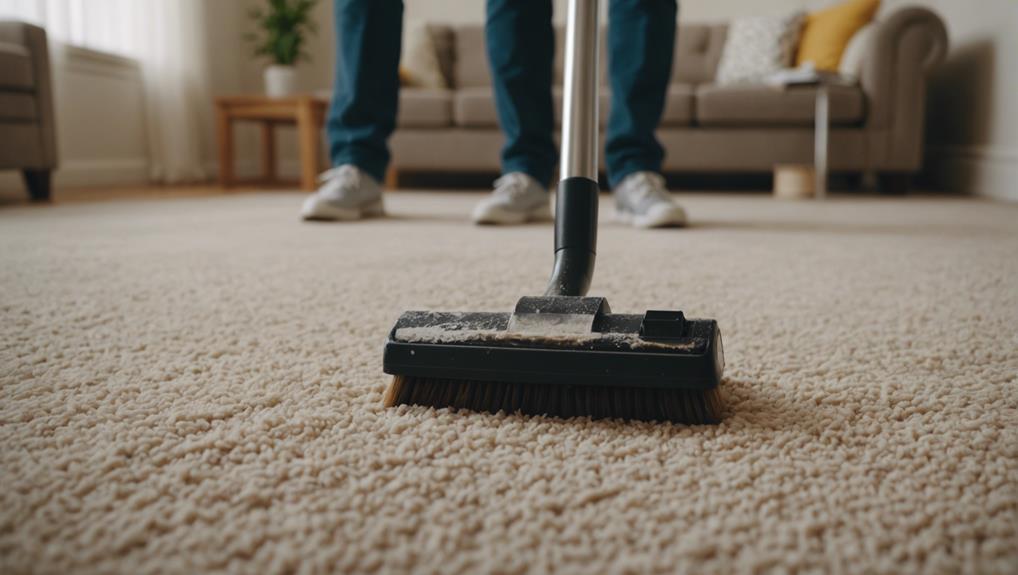
How can you guarantee successful carpet stain removal by avoiding common mistakes?
When dealing with stains on your white carpet, it's essential to act promptly by blotting the affected area with a towel. However, avoid the temptation to rub the stain vigorously, as this can actually make the situation worse by spreading the liquid and pushing it deeper into the carpet fibers.
To prevent transferring any dyes or colors onto the carpet, always use a white cloth or paper towel for blotting.
Before applying any cleaning solution, it's wise to test it on a small, inconspicuous area of the carpet to make sure it won't cause damage or discoloration. Additionally, remember not to oversaturate the carpet with the cleaning solution, as excessive moisture can lead to mold and mildew growth.
Benefits of VacAway Cleaner
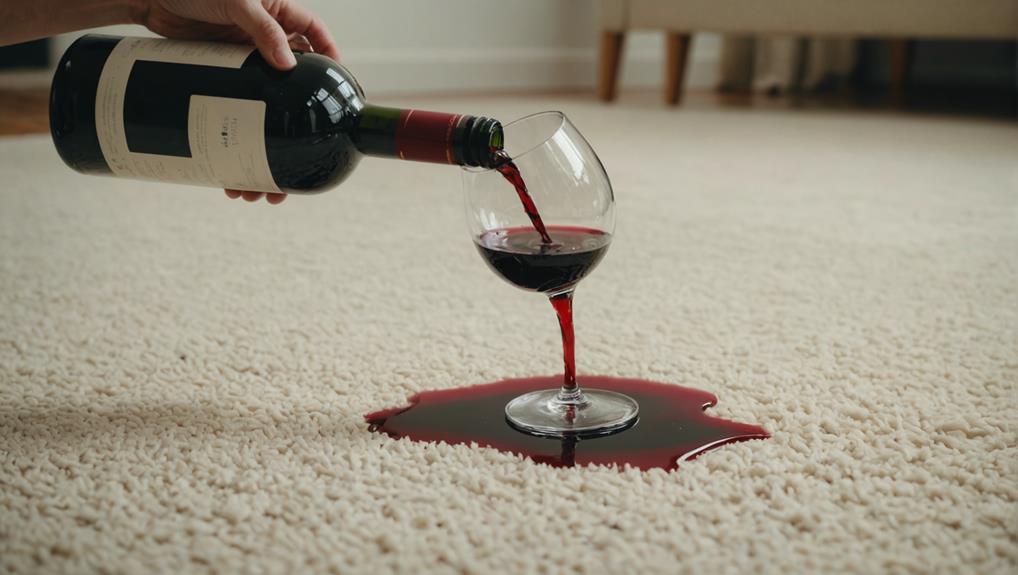
VacAway Cleaner offers exceptional effectiveness in removing carpet stains and spills, making it a dependable choice for your cleaning needs.
Its easy application process guarantees a hassle-free experience, saving you time and effort in maintaining your carpets.
Experience the convenience and power of VacAway Cleaner for a spotless and fresh-looking carpet.
VacAway Cleaner Effectiveness
With its high concentration and economical formulation, the VacAway Commercial Magic Carpet Cleaner stands out for its exceptional effectiveness in removing stubborn stains from commercial carpets. Here are some key benefits of using VacAway Cleaner:
- The high concentration of the cleaner guarantees potent stain-fighting power, making it highly effective on tough stains like wine or grease.
- Its economical formulation means you get more cleaning power out of every bottle, saving you money in the long run.
- Suitable for synthetic fibers with a pH of approximately 11-12 at a 1:32 dilution, ensuring compatibility with a wide range of commercial carpets.
- Customers have praised the reliability and effectiveness of VacAway Cleaner, highlighting its ability to tackle even the most stubborn stains with ease.
VacAway Commercial Magic Carpet Cleaner is a trusted solution for maintaining the cleanliness and appearance of commercial carpets, making it a valuable asset for any cleaning arsenal.
Ease of Application
When applying the VacAway Commercial Magic Carpet Cleaner, you'll appreciate the effortless process thanks to its compatibility with low moisture systems and potent stain-fighting power.
The convenience of using this cleaner lies in its ability to tackle tough stains like red wine effectively. Its concentrated formula surpasses other products like Grease Hawg, guaranteeing a thorough clean every time.
Diluting the cleaner at a ratio of 1:32 makes it economical and suitable for synthetic fibers with a pH of 11-12. However, it's vital to mention that it's not recommended for Stain Resist fibers under warranty or those requiring a pH below 12. This ensures the safe application of the cleaner on appropriate surfaces without causing damage.
Customers have praised the ease of using VacAway Cleaner for removing stubborn stains, making it a popular choice for maintaining the cleanliness of your magic carpet.
Best Practices for Tough Stains
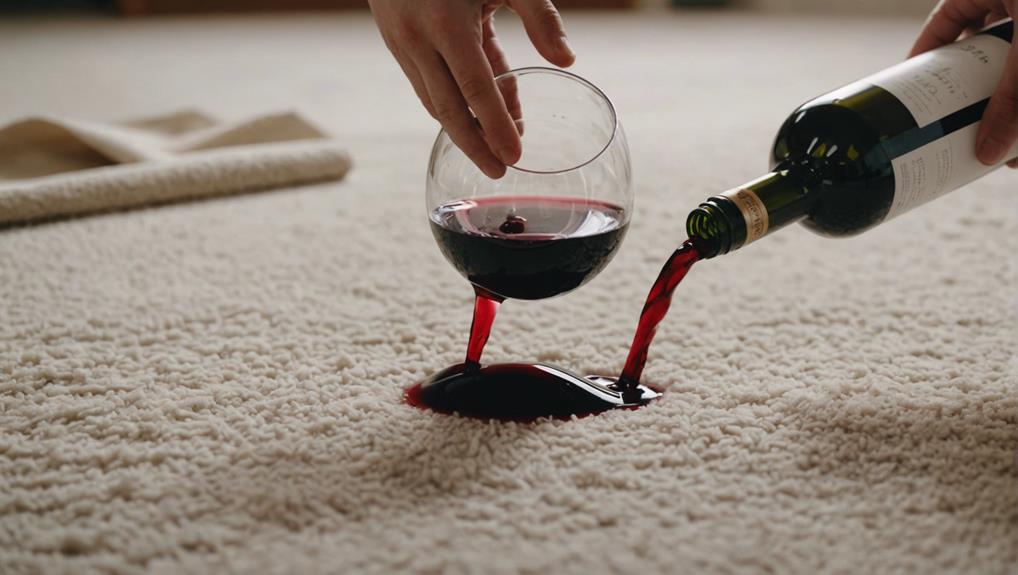
For tackling tough stains on carpets, consider utilizing a combination of effective cleaning solutions and pre-treatment techniques to guarantee thorough removal. When dealing with stubborn stains, here are some best practices to follow:
- Hot Water Extraction: Utilize hot water extraction methods to effectively remove tough stains from carpets, especially those made of natural fibers like wool or cotton.
- Multiple Treatments: Some stains may require multiple treatment sessions for complete removal, so be patient and persistent in your cleaning efforts.
- Pre-treatment: Pre-treat stains with appropriate solutions before shampooing to enhance the cleaning process and ensure better results.
- Effective Solutions: Utilize common household items like baking soda, dishwashing liquid, and white vinegar as effective solutions for tackling tough stains on carpets.
Maintenance and Storage Tips
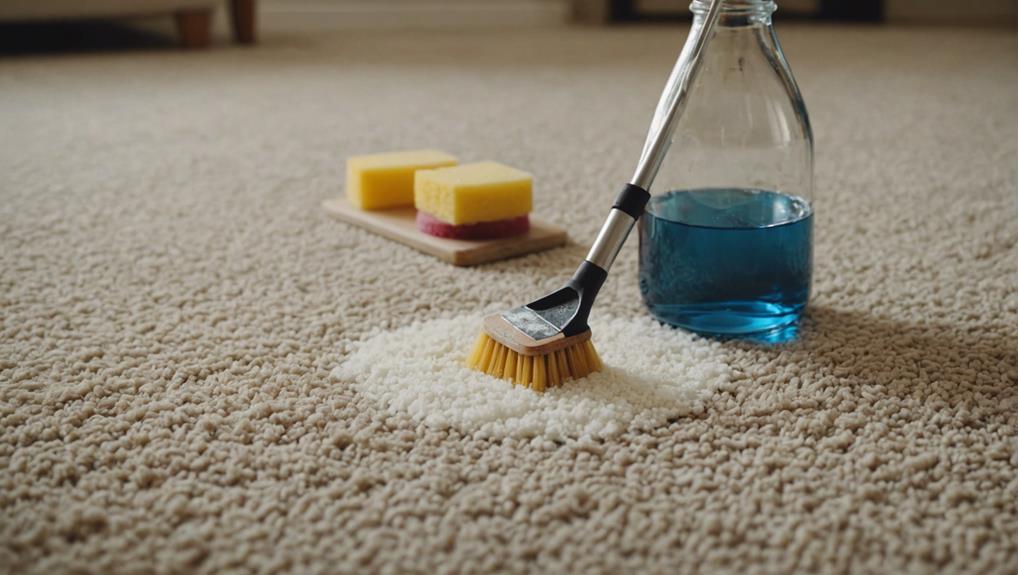
Store carpet cleaning solutions in a cool, dark place to guarantee their longevity and effectiveness. Proper storage helps maintain the potency of the solutions, ensuring they're ready for use when needed.
When storing these products, it's essential to prevent exposure to light and extreme temperatures, as this can affect their chemical composition.
Additionally, always remember to test the color fastness of the carpet in an inconspicuous area before applying any cleaning solution. This simple step can help prevent potential damage or discoloration to the carpet fibers.
Moreover, proper disposal of any unused cleaning solutions is vital to avoid accidental spills or contamination.
Regular maintenance of carpets is also key in preventing deep stains and making cleaning more manageable in the long term. By implementing these maintenance and storage tips, you can make sure that your carpets remain in good condition and are easier to clean when spills or stains occur.
Success Stories and Testimonials

Customers have enthusiastically shared their success stories and testimonials about using magic solutions to effectively remove tough carpet stains caused by various liquids. Users highly recommend these products for their exceptional stain removal abilities. Here are some testimonials that showcase the efficacy of magic solutions:
- *One customer stated, 'I've used this magic solution to tackle red wine spills on my carpet, and the results were impressive.'*
- *Another user praised the product, saying, 'I highly recommend this magic solution for removing stubborn coffee stains from carpets.'*
- *A satisfied customer shared, 'I've used this magic solution to eliminate pet accidents on my carpet, and it worked wonders.'*
- *One testimonial highlighted the versatility of the product, stating, 'I've successfully removed both oil-based and water-based stains using this magic solution.'*
These success stories reflect the satisfaction and confidence customers have in the effectiveness of magic solutions for carpet stain removal.
Frequently Asked Questions
What Is the Best Mixture to Get Stains Out of Carpet?
To get stains out of carpet, mix equal parts Solution A and Solution B from Stain Magic Carpet Spotter. This potent blend chemically alters tough stains like coffee and urine. Clean the area, apply the solution, let it sit, then rinse with hot water extraction.
What Is a Homemade Recipe for Carpet Stain Remover?
To make a homemade carpet stain remover, mix vinegar, baking soda, and dish soap in the right proportions. Vinegar tackles tough stains like pet urine, baking soda deodorizes and removes stains, while dish soap breaks down grease.
What Do Professional Carpet Cleaners Use to Remove Stains?
You know what professional carpet cleaners use to remove stains? They rely on specialized products like Stain Magic Carpet Spotter and Blue Magic Carpet Stain and Spot Lifter. These effective cleaners work wonders on tough stains without hassle.
Does Magic Eraser Work on Carpet Stains?
Yes, Magic Erasers can work on some carpet stains caused by liquids like coffee, tea, and juice. They are effective at removing surface stains but may not penetrate deep. For tougher stains, consider professional carpet cleaners.
Can the Magic Solutions for Removing Carpet Stains With Liquids also work for Spilled Fragrance Oil?
Yes, the magic solutions for removing carpet stains with liquids can also save your carpet from spilled fragrance oil. Quickly blot up the excess oil and then apply a mixture of water and dish soap to the stained area. Blot gently and repeat until the stain is removed.
Conclusion
To sum up, VacAway is the magic solution for removing stubborn carpet stains caused by liquids. With its pre-treatment techniques and application tips, you can successfully tackle tough stains and keep your carpets looking fresh.
Remember to follow best practices, avoid common mistakes, and store VacAway properly for future use.
Don't let liquid stains ruin your carpets – try VacAway today and see the difference for yourself!
